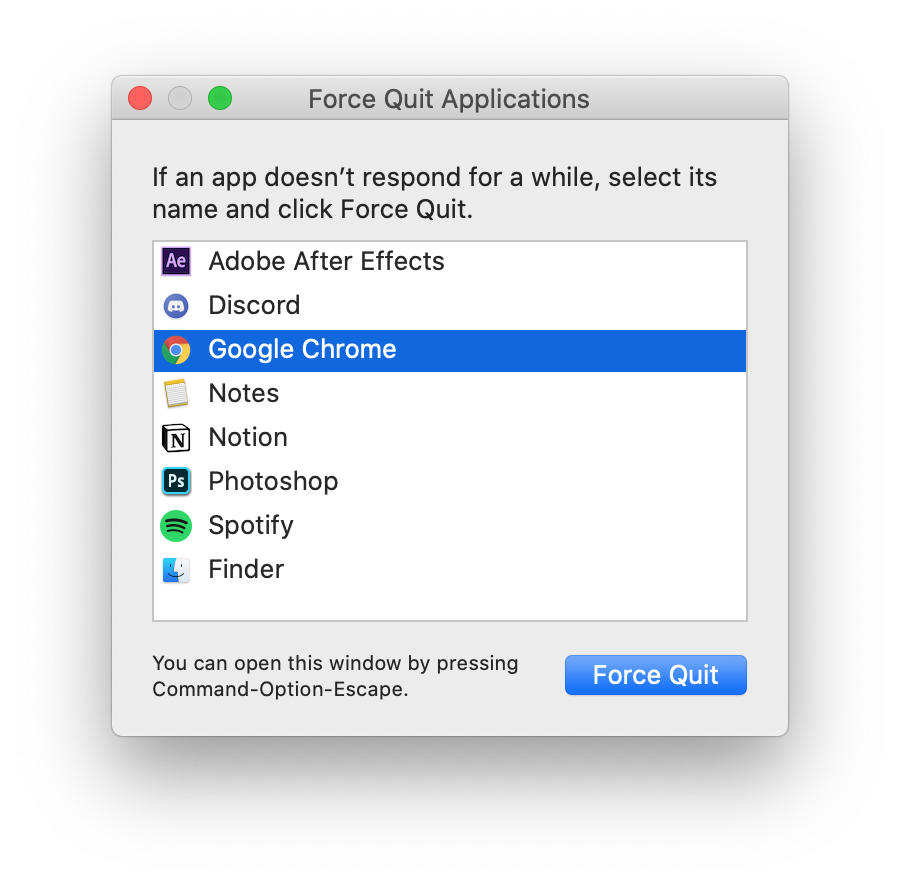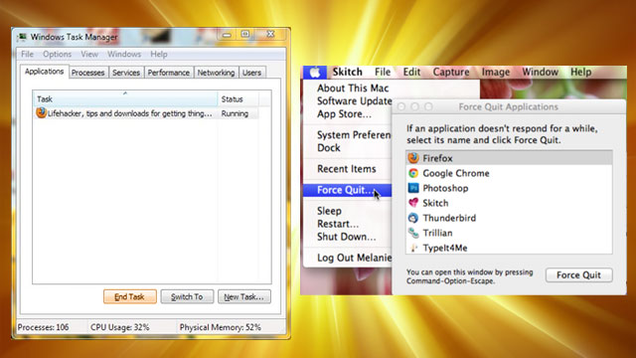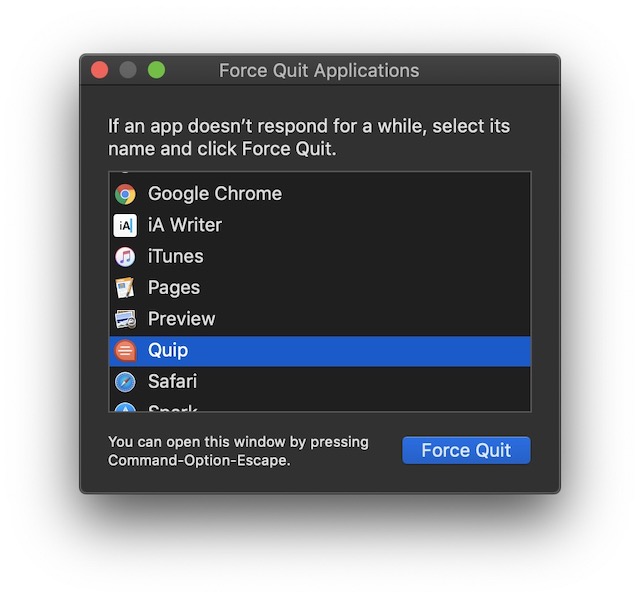

With Force Quit, you receive no such such warning and may lose any unsaved changes. I will close with a warning: when you choose to quit an app normally, you will likely get a warning asking you to confirm your intentions. To do so, highlight the app you want to close, click the X button in the upper-left corner of the Activity Monitor window and then click the Force Quit button. If you are using the Activity Monitor to see how much system resources a sluggish or unresponsive app is consuming, you can Force Quit the app from right within the Activity Monitor.

And that keyboard shortcut is Command-Option-Escape. You can call up the Force Quit window with a keyboard shortcut. Highlight the troublesome app and click the Force Quit button to close it. This opens the Force Quit Applications window, which provides a convenient list of all of your open applications, denoting any that are not responding. Click the Apple icon in the upper-left corner and choose Force Quit. You can access Force Quit from the Apple menu. With the Option key pressed, the Quit menu item turns into Force Quit.
Force quit mac shortcut how to#
How to force an app to quit Press these three keys together: Option, Command and Esc (Escape). If the app doesn't quit, follow these steps to force the app to quit. Dockįor an app whose icon you have parked in the Dock, you can right-click on the icon and hit the Option key. To quit (close) a Mac app in the normal fashion, choose Quit from the app's menu in the menu bar or press Command ()-Q. If you release keys before the time you set, then app closure will not happen.Īpart from that, the application offers various settings that you can use to get the most out of it.ĭo you force close and quit apps accidentally? What have you done to prevent that? Let us know in the comments.If you encounter an unresponsive app on your Mac, you have four methods at your disposal to close it using Force Quit. When you press and hold the Cmd-Q combination, a small countdown timer will appear on the screen. Once you set a time, the application will only close if you keep pressing the button for that period of time. SlowQuitApps is an OS X application that let you add a delay timer between pressing Cmd-Q and the app closing. All you have to do is to start using a freeware program called SlowQuitApps. Luckily, there is a way to prevent yourself from this little conundrum. How to never accidentally quit apps on Mac again Due to this reason, lots of people accidentally press Q instead of W and lose valuable work.

Now, have a look at the keyboard on your Mac, you will notice that the Q and W are set next to each other. Apart from that, this command is used for other apps, as well. Also, if you’re using Word Processors, then it will close the open document. Suppose you’re running Chrome browser, then it will close the current tab. It happens with most Mac users at least once a day.Īnother heavily used keyboard shortcut is CMD +W, this closes the current tab of the application. We all are humans, and we make mistakes, right? While working on Mac, if you’ve ever accidentally quit an app, then you’re not alone. With the help of this shortcut, users can easily quit apps that are running. Mac offers various handy shortcuts and one of them is CMD + Q. If you’re a Mac user that has a habit of using Mac shortcuts, especially the CMD + Q command to quit apps, then this post is dedicated to you.


 0 kommentar(er)
0 kommentar(er)
